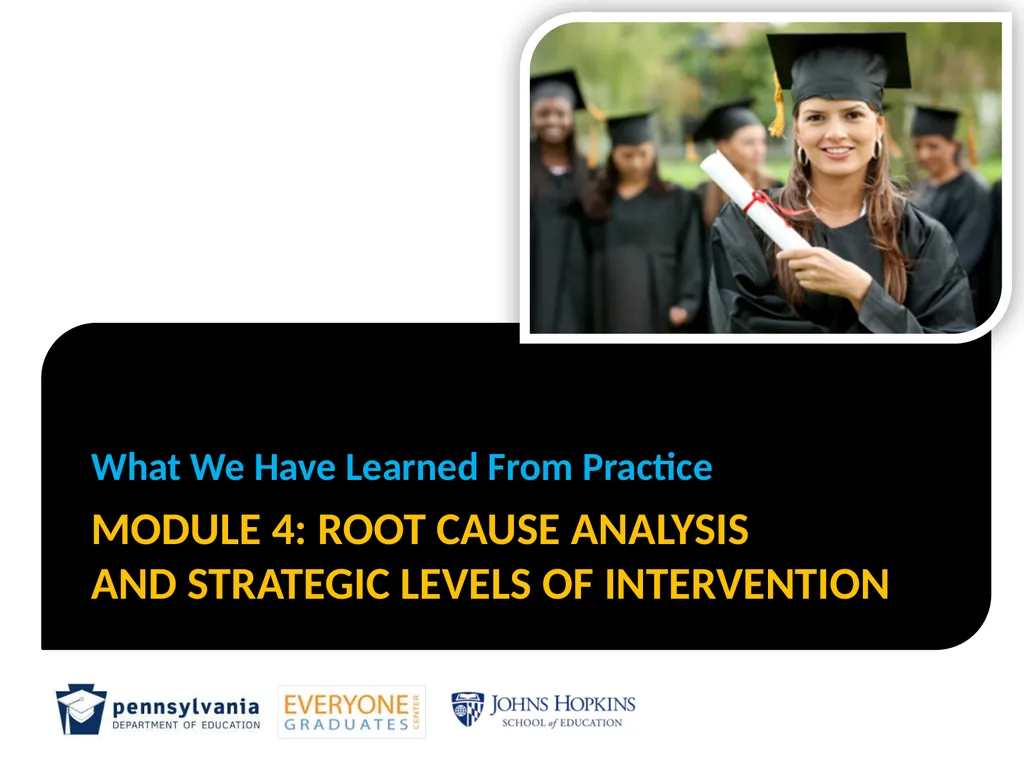MODULE 4: Root cause analysis and Strategic Levels
Author : liane-varnes | Published Date : 2025-08-08
Description: MODULE 4 Root cause analysis and Strategic Levels of Intervention What We Have Learned From Practice Outcomes of Module 4 Adults will have deepened understanding of root cause analysis and its applications in their school and district
Presentation Embed Code
Download Presentation
Download
Presentation The PPT/PDF document
"MODULE 4: Root cause analysis and Strategic Levels" is the property of its rightful owner.
Permission is granted to download and print the materials on this website for personal, non-commercial use only,
and to display it on your personal computer provided you do not modify the materials and that you retain all
copyright notices contained in the materials. By downloading content from our website, you accept the terms of
this agreement.
Transcript:MODULE 4: Root cause analysis and Strategic Levels:
MODULE 4: Root cause analysis and Strategic Levels of Intervention What We Have Learned From Practice Outcomes of Module 4 Adults will have deepened understanding of “root cause analysis” and its applications in their school and district. Adults will practice using strategic levels of intervention to: Diagnose individual and group patterns regarding dropping out and staying “on track.” Identify next steps for individual, group and whole school improvement. Introduction: What is “Root Cause Analysis”? Root cause analysis: How one determines what underlying factors lead to student outcomes in order to provide better results. In EWS, this helps us understand some of the situations which offer challenges for students so that we can look for better areas of response. Root Cause Analysis Background: The impact of external factors External Risk Factors Impact Academic and Social Behaviors Kids who grow up in stressful environments find it harder to concentrate, follow directions, and rebound from disappointment. This has a direct effect on their school performance. Exposure to Violence Residential In-Stability Hunger and Poor Family Health Students as Caregivers Early Adolescence Brings its Own Set of Challenges For Students? Flight, fight and withdrawal Some students stop attending school regularly. – Flight Some students start acting out and being disruptive in class. – Fight Some students just stop trying and start failing courses. – Withdrawal The Good News in Recent Lessons from Brain Science There is substantial plasticity to the human brain: it can be shaped and re-shaped through life experiences. Important brain developments continue through young adulthood, in particular around self-regulation. Student relationships with caring and supportive adults are powerful antidotes to the stress impacts of socio-economic disadvantaged backgrounds. Schools can be organized to enable students to overcome many of the impacts of being socio-economic disadvantaged. Framework: The impact of Policies and structures Responses to Environments Influence Leaving School: Listening to Early Dropouts (10th graders) . Source of table is NELS:88. Two Years Later, National Center for Education Statistics (NCES) Stress: Transitions Are Difficult - Attendance Worsens as Students Move from Grade 8 to 9 Stress: Transitions are Difficult -- Percent Passing Core Courses Drops as Students Move from Grade 8 to 9 Same Patterns, Different Numbers The following three slides are included to illustrate the fact that while different districts often educate different sub-groups of students – or may educate similar students differently, or may have different policies and practices that influence how














